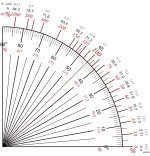I've never had a problem going up hill with eh backhoe on...which I guess means my "hills" are like your hills! Though I did leave the back hoe on with just my front blower this winter. That was scary. A sneeze was just about enough to bring the front wheels off the ground. I won't repeat that next winter!
I wonder if you can add some weight to the front of the tractor. If you remove the brush guard, would there be enough room between the loader and the frame to add some weights?
I have some old weights that I believe I will experiment with to see how much weight it will take to hold it down then go from there.

